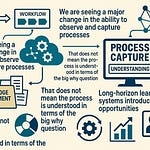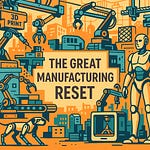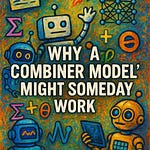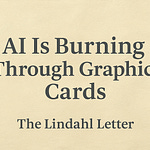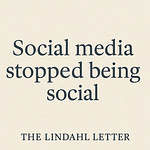Thank you for tuning into the podcast. This is week 202 of the Lindahl Letter publication. A new edition arrives every Friday. This week the topic under consideration for the Lindahl Letter is, “Personalized context bubbles.”
Last week we took a deeper look into content window fragmentation. That is just the right amount of foundation to start to consider personalized content bubbles. Don’t panic; no foundation model pun intended. I even talked about it on YouTube during a recent Nelscast episode. It has been years since I actively livestreamed on YouTube. Live streaming is apparently a lot like riding a bicycle and you pick it back up pretty quickly.
The context bubbles we are focusing on today are model-specific and ultimately memory-driven. Functionally they are hidden from the outside world and only interacted with by the user. The whole experience is highly gated and mostly hidden by design. Unlike the algorithmic filter bubbles of the social media era, highly personalized context bubbles in LLMs emerge from user-specific interaction histories and model memory. They are shaped by prompts, preferences, and usage over time. Some people have ridiculously deep context in memory and have radically changed how the model even interacts with them on an ongoing basis. Some people even call this a type of modal rot where things worked better initially and then over time degraded.
This type of both hidden and blatantly obvious fragmentation is increasing across AI ecosystems. There is no interoperability between different models’ memory systems. A user’s context in GPT-4o does not translate to Claude, Gemini, or Mistral, leading to siloed experiences that fragment continuity and collaboration. It means the only point of continuity is individual to the user and fundamentally disjointed to any external view.
Ultimately what we are talking about is that private AI interactions are creating isolated knowledge spaces. As more users rely on fine-tuned personal agents and persistent memory features, the result is a proliferation of parallel digital realities, each uniquely shaped by the individual’s bubble of past interactions. It takes everything that was creating conflict within our broader social fabric and exacerbates it both in terms of isolation and from an observability consideration it remains completely invisible.
The risk of invisible epistemic bias is growing. Personalized bubbles can limit intellectual perspective and reinforce confirmation bias, particularly when LLMs refine outputs based solely on a user’s prior behavior and inputs. You can basically create a walled garden of very optimistic reinforcement that just celebrates whatever perspective, the bubble has fostered for the end user.
I would argue that this is happening because no standards for portability of data exist. Truly at this point in the ecosystem there is a lack of standards for context portability. Without a framework to export or synchronize context across tools or agents, users remain locked into proprietary silos, impeding collaborative and transparent knowledge generation.
What’s next for the Lindahl Letter? New editions arrive every Friday. If you are still listening at this point and enjoyed this content, then please take a moment and share it with a friend. If you are new to the Lindahl Letter, then please consider subscribing. Make sure to stay curious, stay informed, and enjoy the week ahead!





